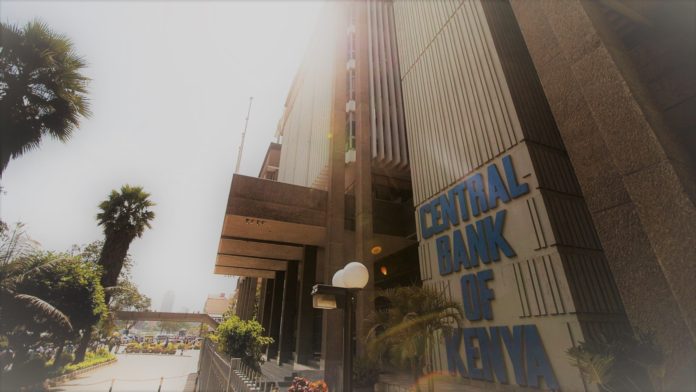The Kenyan Banking Quarterly Pre-Tax Profit fell by KSh 9.1 billion from KSh57.6 billion in September 2023 to KSh48.5 billion in December 2023. This is according to findings of the latest Credit Officer Survey conducted by the Central Bank of Kenya(CBK) for the quarter that ended 31st December 2023.
The CBK Survey, which covered the 39 licensed commercial banks in Kenya, said this decrease in profitability was mainly attributable to a higher increase in quarterly expenses by KSh 32.3 billion compared to the rise in quarterly income by KSh23.2 billion.
In the quarter that ended December 31, 2023, factors affecting demand for credit included the cost of borrowing and an increase in the Central Bank Rate (CBR). Issuance of equity, debt securities, and the COVID-19 pandemic was cited as having had the least impact on the demand for credit during the quarter under review.
According to this Survey, 54 per cent of banks interviewed indicated that non-performing loans would likely rise in the first quarter of 2024. This is as an increase in the Central Bank Rate begins to impact the banking industry. Several lenders have already adjusted the cost of credit to their customers.
Survey findings show that the level of NPLs is expected to remain constant in nine economic sectors and increase in Personal and, Household, and Trade sectors during the first quarter of 2024.
For the quarter ended March 31, 2024, banks expect to intensify their credit recovery efforts in eight economic sectors and retain them in three sectors (Mining and Quarrying, Energy and Water, and Financial Services).
The intensified recovery efforts aim to improve the asset portfolio’s overall quality.
The main sectors that banks intend to intensify credit recovery efforts are Personal and Household (89 per cent), Trade (82 per cent), Real Estate (76 per cent), Building and Construction (70 per cent) and Manufacturing (70 per cent).
The aggregate banking sector Balance Sheet Size, meanwhile, increased by 4.2% to KSh 7,724.9 billion in December 2023 from KSh 7,413.1 billion in September 2023
This Survey, covering the last quarter between September and December, also found that loans disbursed by banks reached a total of KSh 4,199.5 billion in December 2023.
According to the CBK survey, some of the big borrowers were in the manufacturing, trade, financial services, and personal and household sectors.
The increase in gross loans was mainly due to increased loans granted to individual borrowers.
Total deposits in the banking sector increased by 5.7 per cent from KSh5,498.1 billion in September 2023 to KSh5,812.1 billion in December 2023.
The industry’s asset quality, measured by gross nonperforming loans to gross loans ratio, improved from 15.0 per cent in September 2023 to 14.8 per cent in December 2023. This was due to a lower increase in non-performing loans of 0.7 percent.
The capital adequacy ratio decreased to 18.3 per cent in December 2023 from 18.6 per cent in September 2023.
Return on Equity (ROE) for the Banking sector decreased from 25.0 per cent in September 2023 to 23.0 per cent in December 2023. This was due to a higher increase in shareholders’ funds than in profits.
Liquidity in the banking sector increased from 49.3 per cent in September 2023 to 51.0 per cent in December 2023. This was well above the minimum statutory ratio of 20 per cent.
Factors that led to improved liquidity in the quarter under review included:
- Increased deposits (65 per cent).
- Loan recovery (18 per cent).
- Maturity of government securities (15 per cent).
- Capital injection (2 per cent).
In the fourth quarter of 2023, demand for credit increased in the Manufacturing, Trade, Real Estate, and Personal and Household.
The Survey expects non-performing loans or defaults to increase in the Personal, Household, and Trade sectors during the next quarter. This is in tandem with the anticipated increase in demand for credit in these sectors.
With Banks experiencing improved liquidity in the first quarter period ending March 2024, it is expected that credit to the private sector will increase as several banks intend to deploy the additional liquidity towards lending to the private sector (30 per cent), investing in Treasury Bills (26 per cent), interbank lending (23 per cent), investing in Treasury Bonds (13 per cent), take advantage of CBK liquidity through repos (4 per cent), Increase their cash holdings (2 per cent), and Invest in other instruments including offshore (2 per cent).
The CBK undertakes a quarterly Credit Officer Survey to identify the potential credit risk drivers.
The Survey requires senior credit officers of banks to indicate their bank’s perception or actual position in the immediate past quarter and the subsequent quarter in terms of demand for credit, credit standards, asset quality, credit recovery efforts, deployment of liquidity and impact of implementing new standards.
Thirty-eight operating commercial banks and one mortgage finance company participated in this CBK Commercial Banks Credit Officer Survey.





